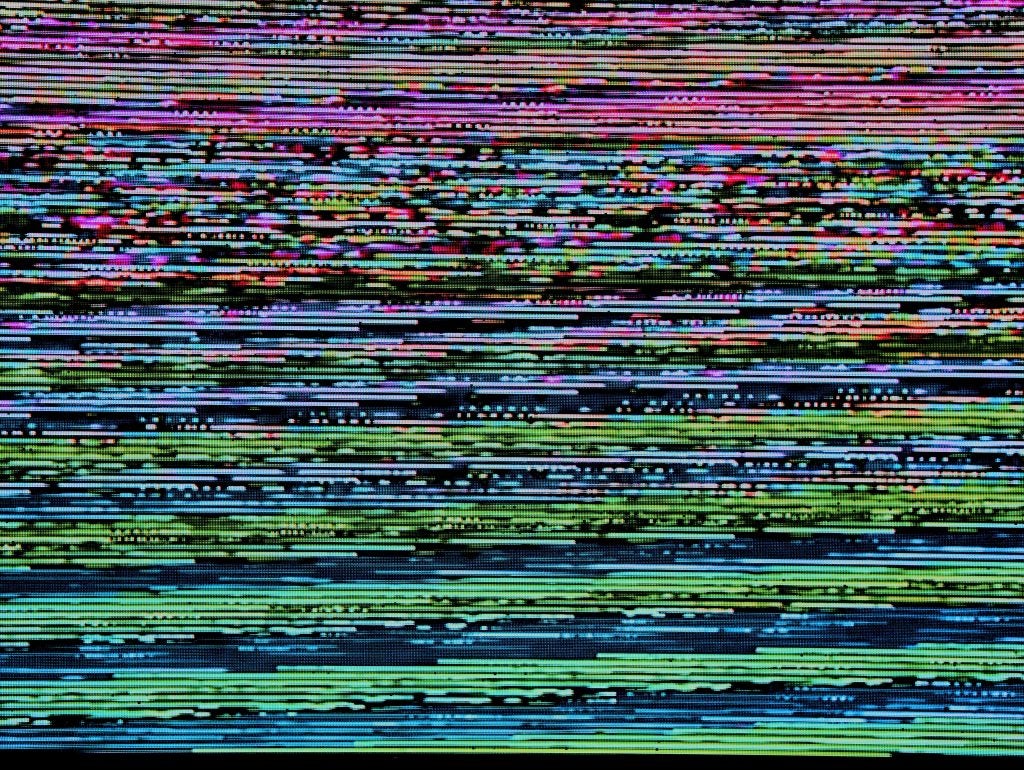Obscenity is generally defined as the state of being indecent, offensive to morality, or sexually explicit; however, every government and person has a different standard for what constitutes obscenity. Just as governments vary in their definition of obscenity, there is also variance in how they might restrict what they determine to be obscene material. Generally, more restrictive policies concerning obscenity are referred to as conservative, whereas more lenient policies are referred to as liberal. While it is beyond the scope of this article to describe every country’s policies regarding obscene media, this article will discuss the media regulation of sexual materials in five different countries.

Table of Contents
Iran
Iran has some of the most restrictive laws regulating sexual expression. The country requires rigid regulation of sexual content not only in the media but also in civic life. Women must wear special veils known as hijabs in public to cover most of their skin and to conceal their figures.1 It is illegal to depict unveiled women in Iranian cinema, thus making it incredibly difficult for filmmakers to portray women inside their homes—one of the few spaces where women often forgo wearing their hijabs.2 While filmmakers have found clever ways to circumvent these regulations, such as strategic footage panning away from women when they take off their veils, many argue that Iran’s censorship laws are a detriment to creative expression.2
Stringent internet censorship of obscene materials is commonplace in Iran. In 2012, Iran’s ruling regime established the Supreme Council of Cyberspace which, among other things, controls Iran’s Committee for Determining Offensive Contents.3 This committee maintains a list of banned websites that are deemed immoral or critical of political and religious figures.4
Iran also imposes severe punishments for violations of internet morality laws. The average internet user can expect scrutiny and harassment along with threats of imprisonment if they visit potentially controversial websites, even unintentionally. Bloggers and web designers who violate Iran’s internet morality laws may face imprisonment and torture. Notably, one Iranian web designer was sentenced to death when his software was used to upload pornography, despite contending that the software was not designed with that purpose in mind.5
Generally, Iran has very conservative laws regulating their media, especially pertaining to content that is sexually explicit or obscene.
United Kingdom
The United Kingdom is generally regarded as a more lenient country in terms of censorship. Examples of the United Kingdom’s liberal policies can be seen in the fact that they have had legalized abortion since 1967 (except Northern Ireland) and legalized same sex marriage in 2014.6,7 Still, the United Kingdom maintains some reservations about the regulation of sexual materials in their media.

The possession of extreme pornography became banned in England and Wales under part five of the 26th Criminal Justice and Immigration Act in 2009.8 The law defines “extreme pornography” as any sexually explicit images that portray realistic, life-threatening scenarios. Scenes depicting harm inflicted on the genitals, breasts, or anus, as well as depictions of sexual acts with a corpse or animal, directly violate the statute.8
This law was drafted in response to a murder committed by Graham Coutts, who killed a woman named Jane Longhurst in what he claimed to be a consensual erotic asphyxiation incident. The prosecution cited Coutts’ habitual viewing of violent pornographic sites as evidence of his guilt and intent. The trial’s notoriety inspired the formation of a panel that assembled research linking extreme pornography with sexual aggression.8 Ultimately the panel concluded that pornography posed a threat to the psychological wellbeing of its consumers. These findings were later subjected to heavy criticism when it was discovered that the panel was comprised of three scholars who were markedly biased against pornography.8 This law, which is a clear example of government censorship, shows how the United Kingdom is attempting to distinguish between free expression and harmful media.
Brazil
Brazil is a country with many conflicting ideals and interests regarding media regulation. Political sentiment has always had an impact on what can and cannot be depicted in Brazilian media. Current conservative political leanings in the country resulted in much stricter regulations of media materials, especially compared to the more lenient policies that existed in past decades. This trend can be seen as a retaliation against the liberal attitudes that were held toward explicit media in Brazil immediately following the end of the Brazilian military dictatorship. While the dictatorship was generally rigid in their regulation of media, they surprisingly endorsed Pornochanchadas, or erotic comedies. These movies utilized comedy and sex appeal to attract audiences.9
After the dictatorship, during the late 1980’s, Brazil took a very lenient stance when it came to media regulation in order to shift away from the oppressive censorship conducted by the previous military regime.10
For example, adult content was occasionally featured on children’s television programs. In one instance, Brazilian singer Xuxa performed a song entitled “Short Dick Man” in front of an audience entirely composed of children for television. The lyrics went as far as saying, “não quero homem de pinto pequeno,” or “I don’t want a man with a small dick.”10
Media regulation in Brazil took a decided conservative turn after this era, especially in regards to sexual content. The Classificação Indicativa (ClassInd) advisory rating system is now used to label any and all electronic media.11 Movies, television shows, and videogames now receive an L-18 rating in accordance to the degree and manner in which drugs, sex, and violence are depicted.
L Livre Content is suitable for all audiences
10 Content suitable for viewers over the age of 10.
12 Content suitable for viewers over the age of 12.
14 Content suitable for viewers over the age of 14.
16 Content suitable for viewers over the age of 16.
18 Content suitable for viewers over the age of 18, and only on cable TV channels.12
Regulations of pornography on the other hand, is not monitored by the ClassInd advisory rating system. The production and consumption of pornography in Brazil is legal, but adult filmmakers cannot depict minors under the age of 18 in any scene that is sexually explicit, despite the age of consent in Brazil being 14.13,14 Besides this, most activities are is permitted in Brazilian pornography—including acts of zoophilia.15
In 2017, a group of prominent conservatives with the Free Brazil Movement were successful in shutting down a gender diversity art exhibition in the city of Porto Alegre. The group cited depictions of pedophilia and child pornography in the artwork as the reason behind their opposition. While the show did contain several sexually explicit and controversial pieces of art, including images of children labeled “transvestite” and “gay child” no artwork actually featured pedophilia or child pornography.16
It is apparent that Brazil’s political leanings will continue to impact the restrictions and regulations that are placed on sexual materials in their media.
Turkey
Turkey’s president, Recep Tayyip Erdogan, is regularly criticized for his censorship efforts, especially against reporters and bloggers who disapprove of him.17 However, the president’s censorship is not limited to those who speak critically of him. In 2007, Erdogan passed Law 5651, which resulted in the formation of a new government institution called the Presidency of Telecommunication and Communication (TIB). TIB has the power to ban websites without a court order if it deems such sites guilty of acting against the wellbeing of the country. Thus, websites that the government determines as containing obscenity are outlawed.18 TIB has yet to provide a specific definition of what constitutes obscenity.
TIB has provided citizens with very little information about why certain websites have been banned, nor have they clearly outlined their criteria for defining obscenity and other offenses. In 2008, TIB released a comprehensive list of banned websites along with their corresponding reasons for why each website was banned. TIB claims that as of September 2014, 84 percent of all illicit websites were banned due to obscenity.18
Due to Turkey’s lack of transparency in defining obscenity, it is difficult to ascertain what qualifies a website to be labeled obscene under Law 5651. Some speculate that the Turkish government’s motivations for stricter censorship laws are religious, given that social conservatism is a fundamental principle of the ruling political party.19
Regardless, given the sheer number of websites banned, it is clear that the Turkish government enforces strict censorship of sexually explicit and pornographic content.
Denmark
Denmark became the first country to legalize pornography in the late 1960’s. They began by legalizing erotic literature in 1967, followed by pornographic images in 1969.20 These developments presented an opportunity for researchers to extend their scope of scholarship into the revolutionary and controversial world of hardcore pornography.
Researchers in Denmark attempted to determine the correlation between the circulation of pornography and sexual aggression. They found that sexual aggression declined after the legalization of pornography, suggesting that pornography could have positive social benefits. Academics from around the world often cite this research when debating about the implications of pornography.20
To this day, Denmark maintains a very high degree of media freedom with few exceptions reserved for cases of libel, treason, and racism.21 Those with liberal views towards the production, distribution, and consumption of pornographic materials argue that Denmark is and has been ahead of its field in this regard. Opponents of obscene content, on the other hand, contend that the legalization of pornography in Denmark is indicative of moral decline.20
Concluding Remarks

The amount of government regulation of sexuality in the media varies greatly. Most countries fall somewhere on a spectrum from the most conservative, like Iran, to the most liberal, like Denmark. There are countless cultural and religious factors that play into how a country deals with pornography and sexual expression, and no two countries are alike. To make matters more confusing, there does not seem to be a definitive trend in terms of media freedom. Some countries are reducing regulations, whereas others are increasing their control over the media. The introduction of the internet has only further complicated the situation, as every country’s legislators approach the issue differently. Whereas some people view the internet as an opportunity to protect their morals by tightening government control over the media, others believe control over all internet pornography as an impossible task. Of course, internet pornography is just one topic within the broad field of sexual media materials. Ultimately all regulation goes back to the great challenge of finding a balance between freedom of expression and government control.
References
- Cunningham, Erin. “Women in Iran are pulling off their headscarves – and hoping for a ‘turning point’.” The Washington Post. The Washington Post, 8 March. 2018. Web.
- Shirazi, Faegheh. “The Veil Unveiled: The Hijab in Modern Culture.” Choice Reviews Online39.05 (2002). Web.
- Aryan, Simurgh. “Internet Censorship in Iran: A First Look.” USENIX Workshop (n.d.). Aug. 2013. Web.
- Brown, Ian. “Internet Censorship: Be Careful What You Ask for.” N.p., 2008. Web.
- “Ecoi.net – European Country of Origin Information Network.” IRB: Iran: Government Surveillance Capacity and Control, including Media Censorship and Surveillance of Individual Internet Activity [IRN104972.E] |. N.p., 16 Jan. 2015. Web.
- Hill, Megan. “What are the UK abortion laws, does the NHS offer terminations and which countries have made them legal?” The Sun. News Group Newspapers Limited, 28 May. 2018. Web.
- Akkoc, Raziye. “Mapped: Where is same sex marriage legal in the world?” The Telegraph. The Telegraph Media Group, 21 May. 2015. Web.
- Attwood, Fiona, and Clarissa Smith. “Extreme Concern: Regulating `Dangerous Pictures’ in The United Kingdom.” Wiley Online Library. N.p., 23 Feb. 2010. Web.
- Johnson, Randal and Stam, Robert. “Brazilian Cinema.” Google Books. Columbia University Press. 1995. Web.
- Capanema, Rafael. “Os 30 momentos mais inadequados da história da TV infantil brasileira.” BuzzFeed, Brasil. 31, July. 2014. Web.
- “Classificação Indicativa.” Ministério da Justiça. Secretaria Nacional de Justiça. Web.
- “Classificação Indicativa Guia Prática.” Ministério da Justiça, 2nd ed. Secretaria Nacional de Justiça, 2012. Pdf.
- Collor, Fernando. “Law No. 8.069, of July 13, 1990.” Civil House Sub-Office for Legal Affairs. Presidency of the Republic, 13 July. 1990. Web.
- “Age of Consent in Brazil.” Age of Consent. Age of Consent, 2018. Web.
- Korstanje, Maximiliano and George, Babu. “Virtual Traumascapes and Exploring the Roots of Dark Tourism.” Google Books. IGI Global, 28 May. 2018. Web.
- Darlington, Shasta. “Brazilian Art Show Sets Off Dispute That Mirrors Political Battles.” The New York Times. The New York Times, 13 Sept. 2017. Web.
- Parkinson, Joe, Sam Schecner, and Emre Peker. “Turkey’s Erdogan: One of the World’s Most Determined Internet Censors.” Middle East News (2014): n. pag. 2 May 2014. Web.
- Akgul, Mustafa, and Melih Kirlidog. “Internet Censorship in Turkey.” Internet Policy Review. N.p., 3 June 2015. Web.
- Erimtan, Can. “The End of “Secular Turkey” or Ottomans Re-emergent?” RT International. N.p., 13 Jan. 2015. Web.
- Martin, Gert. “Home.” PsycNET. N.p., n.d. Web.
- “Freedom of the Press 2008.” Google Books. Ed. Sarah G. Cook. N.p., n.d. Web.
Last Updated: 28 May 2018.
